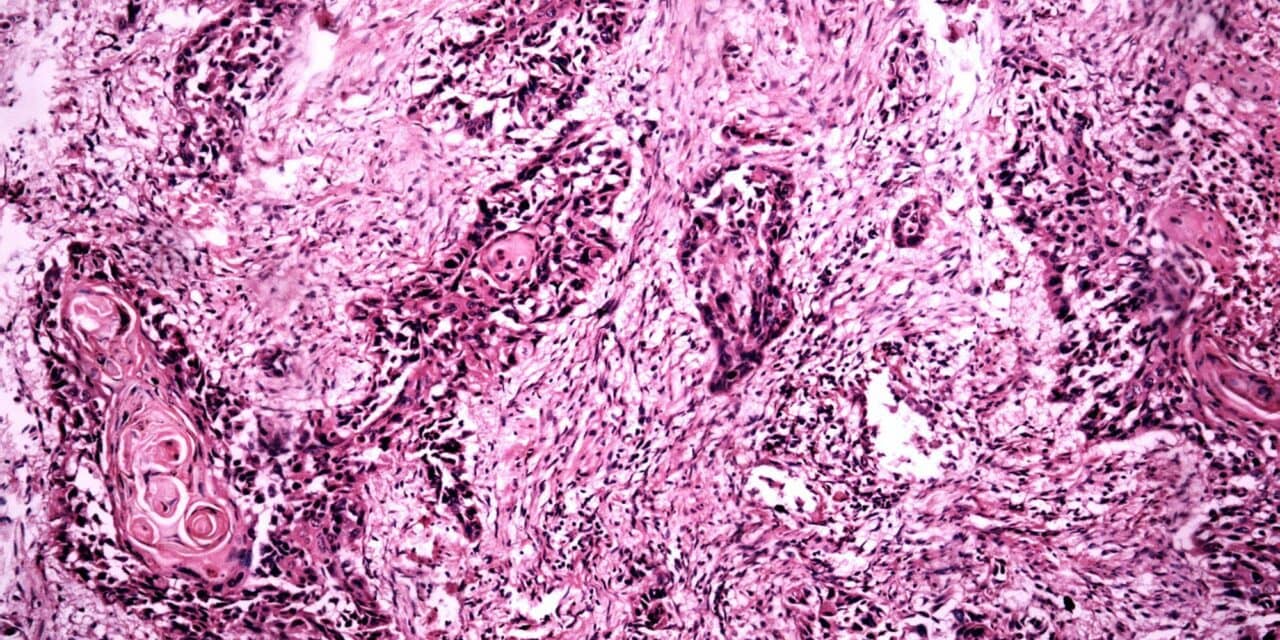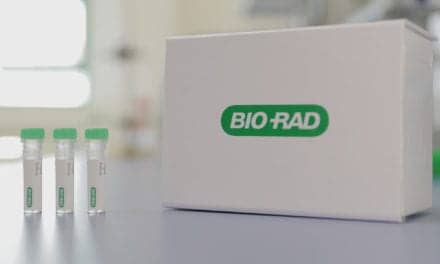The noninvasive Percepta Nasal Swab test from Veracyte Inc. can help physicians more accurately assess lung cancer risk in patients with lung nodules, according to expanded clinical validation data. The findings also show that the test delivers strong clinical performance across different nodule sizes and cancer stages in current or former smokers, as well as for patients who have already had other cancers.
The new data support the Percepta Nasal Swab test’s ability to help physicians determine which patients with lung nodules found on computerized tomography (CT) scans may avoid unnecessary invasive procedures and which patients should proceed to diagnostic work-ups and obtain necessary treatment. The findings will be shared in an oral presentation at the 2021 American College of Chest Physicians (CHEST) Annual Meeting, which was held virtually on Oct. 17–20. Veracyte also has begun making the Percepta Nasal Swab test available to a limited number of clinical sites as it builds the clinical utility data to support reimbursement.
“Approximately 15 million patients are now recommended for annual lung cancer CT screening, and about 1.6 million lung nodules are found incidentally,” says Carla R. Lamb, MD, interventional pulmonologist at Lahey Hospital & Medical Center in Burlington, Mass. “Today, physicians have limited objective tools to help accurately determine which patients with lung nodules found on CT scans have cancer and which don’t. This uncertainty can lead to unnecessary diagnostic procedures or to potentially delayed diagnosis and treatment. Our findings reinforce the Percepta Nasal Swab test’s ability to more accurately identify patients as low, moderate, or high risk for lung cancer so that physicians can make more confident decisions about next steps for their patients.”
According to the company, the Percepta Nasal Swab test’s robust performance in classifying lung cancer risk was previously demonstrated in a blinded, independent validation set of 249 patients from multiple cohorts comprising prospectively collected nasal samples. All patients were current or former smokers undergoing evaluation for lung nodules found on CT scans. Patients were followed for up to one year or until physicians made a final, adjudicated diagnosis. The new expanded data being presented at this year’s CHEST meeting include 63 additional patients with prior (non-lung) cancers who were part of a planned secondary endpoint analysis.
In the expanded cohort of 312 patients, when the Percepta Nasal Swab test identified patients as low risk, its sensitivity was 97%, providing a negative predictive value (NPV) of 98% in a population with the 25% cancer prevalence that would be expected in a broad cohort with suspicious lung nodules. This NPV would assist physicians in avoiding unnecessary invasive procedures in these patients with a very small likelihood of missing a cancer. When the test identified patients as high risk, its specificity was 92%, for a positive predictive value (PPV) of 70% at a malignancy rate of 25%. This PPV would assist physicians in directing these patients to further procedures so they could obtain an accurate diagnosis and speed time to treatment if necessary. Patients in the moderate risk group could be managed according to current clinical guidelines.
In a sub-analysis of the expanded validation set, researchers found that the Percepta Nasal Swab test’s performance is strong across different nodule sizes, with the test identifying 67% of cancers in nodules below 8 mm as moderate risk, while labeling 100% of malignant nodules greater than or equal to 8 mm as high or moderate risk. Performance was also consistent across all stages of non-small cell lung cancer (NSCLC), with 100% of NSCLC Stage II or greater cancers labeled as moderate or high risk.
“These findings suggest that the Percepta Nasal Swab test will provide significant clinical utility across a range of lung nodule sizes and lung cancer stages,” says Giulia C. Kennedy, PhD, Veracyte’s chief scientific officer and chief medical officer. “We are excited to begin offering the test to sites as part of our clinical utility study and to transform lung cancer early assessment so that more unnecessary procedures can be avoided and more lives can be saved.”
Also at the CHEST meeting, data will be presented demonstrating that the Percepta Genomic Sequencing Classifier (GSC) can help reduce unnecessary surgeries and guide next steps in lung cancer evaluation for patients with suspicious lung nodules whose bronchoscopy results were inconclusive. In one retrospective clinical utility study, researchers from the Medical College of Wisconsin found that the Percepta GSC reclassified one-third of lung nodules with indeterminate bronchoscopy results as either low risk or high risk. Similarly, researchers from AnMed Health Medical Center in Anderson, South Carolina, found that the Percepta GSC enabled more than half of patients’ indeterminate lung nodules to be reclassified and, among those moved to a low risk category, there was a significant reduction in the rate of invasive follow-up procedures.
The Percepta Nasal Swab test and GSC use genomic technology to detect smoking-related damage associated with lung cancer in the respiratory tract of current or former smokers. Both tests are part of Veracyte’s comprehensive lung cancer portfolio. Veracyte’s lung cancer portfolio also includes the in-development Percepta Genomic Atlas, which is intended to detect gene alterations that may inform lung cancer treatment decisions, using the same small biopsy that was collected for diagnosis.





